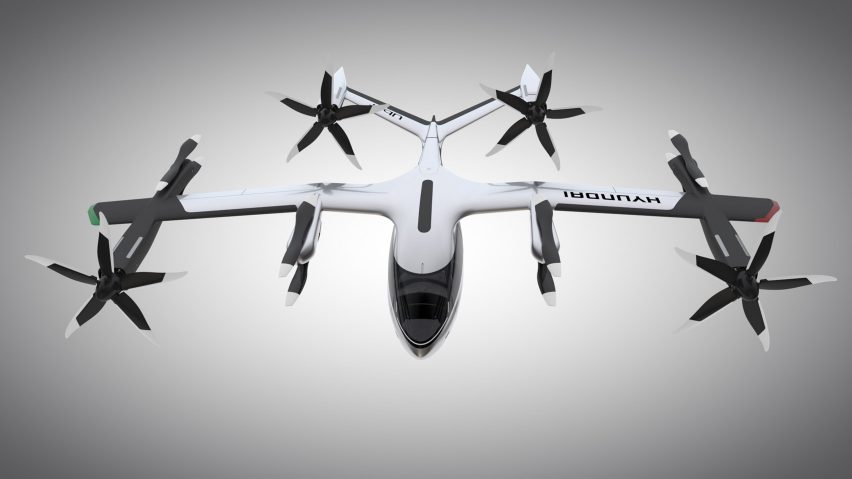Hyundai is the latest automaker to turn its attention from the roads to the skies, partnering with Uber to design a concept for a future air-taxi service.
The Korean manufacturer displayed a full-scale model of its S-A1 aerial vehicle at the Consumer Electronics Show (CES) this week – the world's biggest consumer electronics show taking place in Las Vegas until January 10.
The vehicle is one potential incarnation of a concept Hyundai called Urban Air Mobility (UAM), wherein small, electric passenger vehicles would make use of the airspace above cities.
Alongside the vehicle, it presented designs for the ground-based infrastructure to support a flying-taxi service, run by the likes of partner Uber.
This includes a "hub" structure with a landing pad on top, and an adaptive minibus that Hyundai calls the "purpose-built vehicle" (PBV).
Also electric, these PBVs could be customised to serve different functions as they ferry passengers from their pick-up point to the hub for takeoff. Hyundai suggests a coffee shop and a medical clinic as two examples.
The UAM concept is Hyundai's take on an emerging technology of eVTOL, which stands for electric vertical takeoff and landing.
With rotor-powered flight eliminating the need for a runway, and electric engines keeping the noise level down, such aerial vehicles could perform short flights over or between cities.
Uber has been one of the companies leading the eVTOL charge, and has presented several aerial vehicle concepts since 2017. Previous designs have included a collaboration with NASA and another with Bell Helicopter.
With the UAM concept, the vehicles would be piloted in the early stages of commercialisation, but Hyundai intends them to eventually travel autonomously, like personal drones.
The S-A1 model seats five people, including a pilot. It features multiple rotors, increasing the safety in the case of any individual rotor failure, and has a parachute system for emergencies.
It is built from lightweight carbon composite materials and features a technology-laden interior for the entertainment and comfort of passengers.
By partnering with Hyundai, Uber is hoping to draw on the automaker's mass manufacturing capabilities to create a service that is both affordable and accessible.
"Hyundai is our first vehicle partner with experience of manufacturing passenger cars on a global scale," said Uber Elevate head Eric Allison.
"We believe Hyundai has the potential to build Uber Air vehicles at rates unseen in the current aerospace industry, producing high quality, reliable aircraft at high volumes to drive down passenger costs per trip."
"Combining Hyundai's manufacturing muscle with Uber's technology platform represents a giant leap forward for launching a vibrant air taxi network in coming years," he added.
For its part, Hyundai wants to rebrand as a "smart mobility solution provider" and not just a carmaker.
At CES, its executives extolled the benefits of taking cars off the road, saving people time and "removing urban boundaries".
"We are looking at the dawn of a completely new era that will open the skies above our cities," said Hyundai executive vice-president and UAM head Jaiwon Shin.
"Urban Air Mobility will liberate people from gridlock and reclaim time for people to invest in activities they care about and enjoy," he added.
While UAM is the latest in a long line of "flying car" concepts, eVTOL technology is still in its infancy, with few companies having tested a prototype. Among the first were Boeing and German start-up Lilium.

